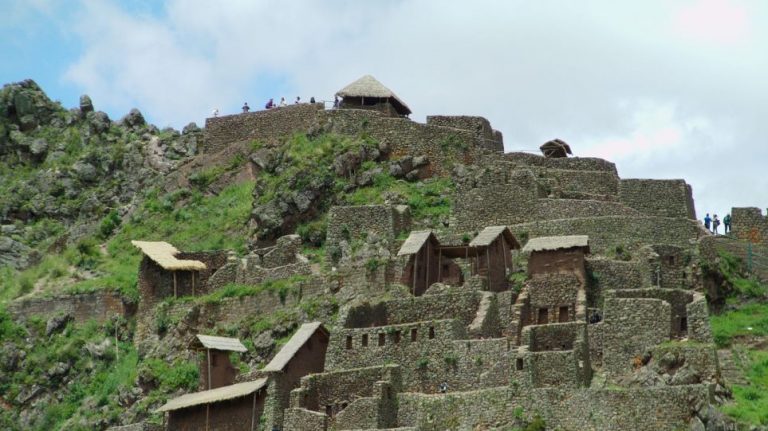Nan Madol is a mysterious place, there is nothing like it the world over. Its people are vanished and its purpose spectacularly obscure. Was it built by the mythical brothers Olishipa and Olosohpa, in honor of the god of thunder Daukatau, or to commemorate the sunken cities off the coast?
Known traditionally as Soun Nan-leng (‘Reef of Heaven’), Nan Madol is a megalithic complex made up of over 90 man-made islets built on coral fill and spread 200 acres over a lagoon edging Pohnpei’s surrounding barrier reef. Pohnpei (formerly Ponape) is the third-largest member of the Federated States of Micronesia, a spray of over 600 islands so-named after their minuscule size. Pohnpei is a compound meaning ‘upon an altar’, in reference to a cloud-capped mountain at the island’s center: at its summit is a basalt altar and a mangrove tree which symbolically represents the birth of the isle from its ocean bed. Nan Madol, popularly referred to as the ‘Venice of the Pacific’ perches upon the southeastern coastline of Pohnpei. Nan Madol means ‘spaces between’.
Venice Of The Pacific
The rectangular buildings of this megalithic metropolis are assembled out of massive boulders and tidily stacked piles of prismatic basalt. The four-to eight-sided columns of this dark, dense and smooth material formed millions of years ago. Guarding Nan Madol from battering ocean tides are the ruins of breakwaters along its coast, while running around and in between the islets is a network of connecting waterways. Today, the majority of crisscrossing canals are glutted with mangrove swamps, while thick tropical growth smothers nearly all of the islets. If left unchecked, the invasion of jungle will devour the entire site – and initiatives to restrain it are not forthcoming. Pohnpei is a hotspot attracting divers and big fish anglers, but sadly not visitors to its megalithic ruins. Many native Pohnpeians are also loath to visit the site, especially at night, since they believe Nan Madol is haunted by ancient spirits which should not be disturbed.
Currently it is thought construction of the site dates back no more than 1,500 years, although earlier foundations have been documented along with evidence of remodeling by successive occupants. Modern scientific research of the complex began in the 1960s and has largely been confined to topography and surface inspection.
Saudi F-15C jets at Souda airbase in Crete (photos)
“Alien” black hole so massive it shouldn’t exist sends wave through the universe
Read more: ancient origins
Ask me anything
Explore related questions





